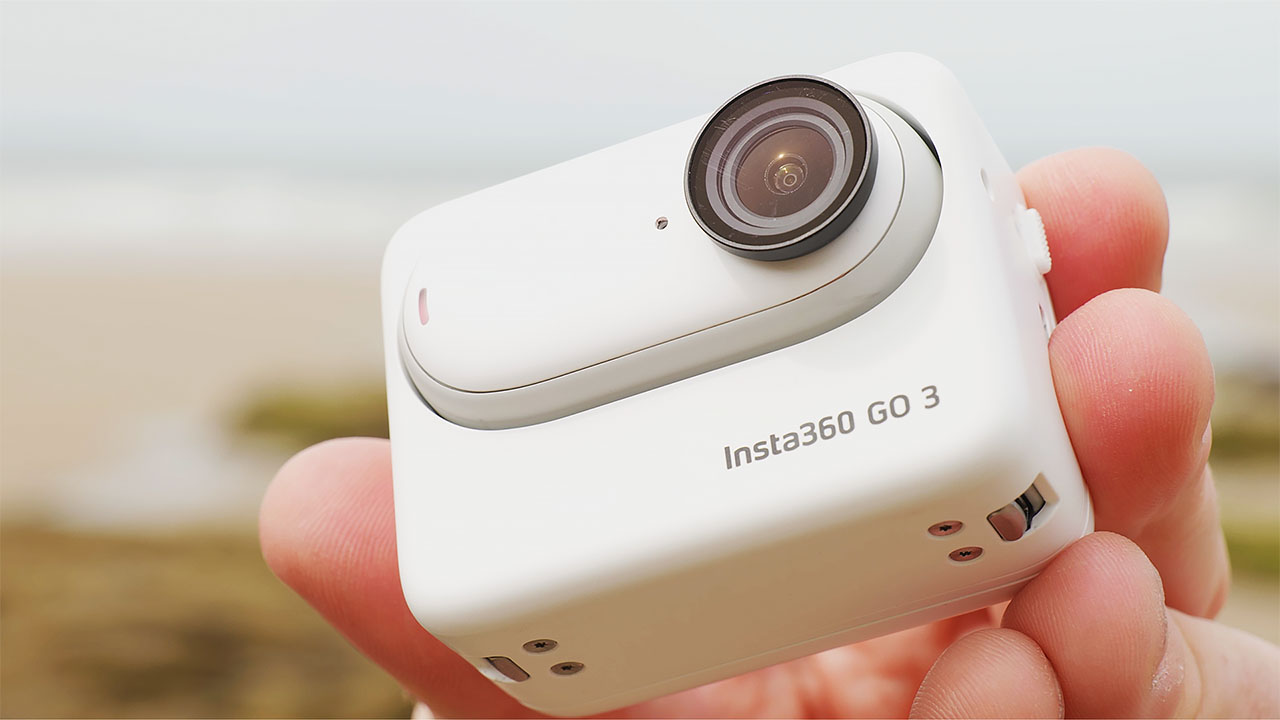
Simon Wyndham reviews the Insta360 GO 3, an action camera that's smaller than an ear bud case.
A couple of years ago, Insta360 released the GO 2, which impressed us with its tiny size and surprisingly good image quality. This year, the GO 3 has been released, and it takes the GO series concept even further with a new Action Pod, much better battery life, and many more image capturing options. Let's dive in.
First impressions
The first surprise with the GO 3 is the new Action Pod. The pod on the previous camera was an enclosed camshell style affair that would be opened up and used to adjust the camera settings, as well as to give the camera extra battery life when required. It was a great system, being extremely compact an easy to carry around, but there was no way to see what your framing was unless you connected the camera to the Insta360 phone app.
All this has changed with the Action Pod. Although the new pod is larger, around the size of a GoPro HERO8, it affords the GO 3 a lot more power and capability. Key to this is the rear LCD screen, which can be flipped upwards to allow self shooting.
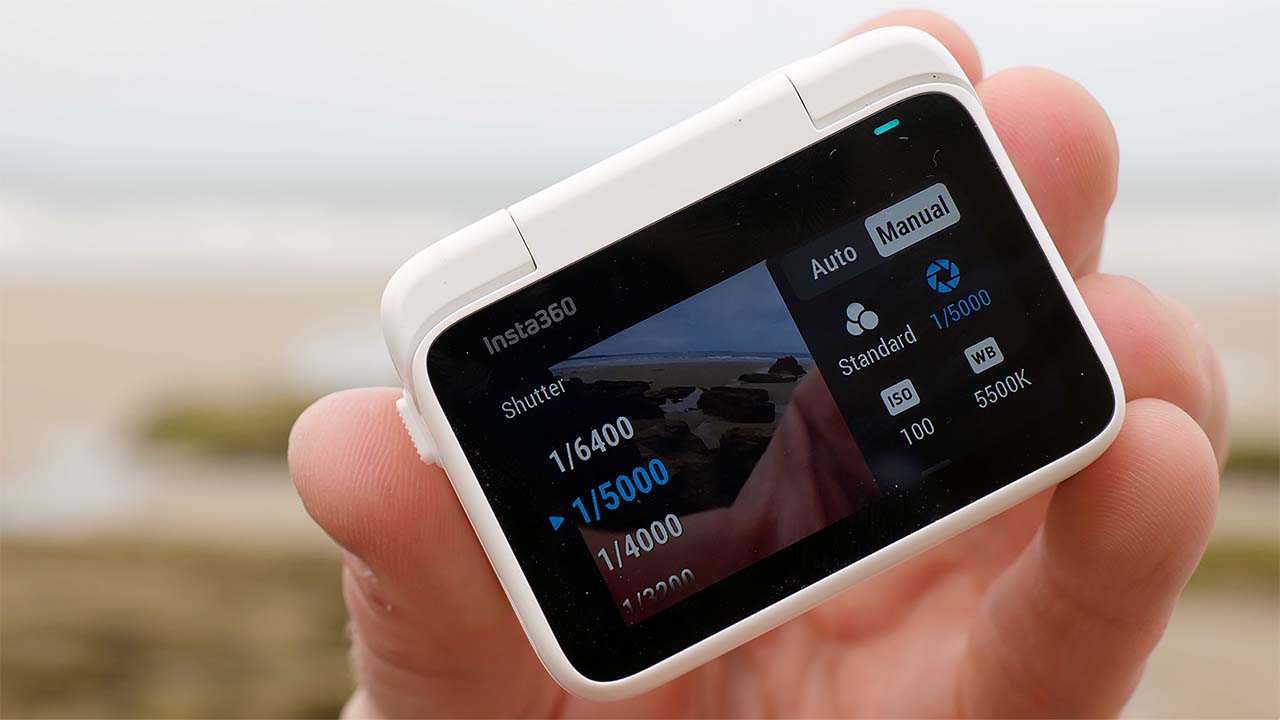
The new large flippable touchscreen on the Insta360 GO 3 is clear and responsive.
The camera itself retains the same overall design of the GO 2, except it is ever so slightly larger to accommodate a higher capacity battery. The GO 3 camera body on its own can now run for around 45 minutes vs 30 minutes for the GO 2. The slightly different size also means that the GO 3 is no longer compatible with GO 2 mount housings.
The lens protector for the GO 3 is the same as the GO 2 and is interchangeable, so if you have any third party ND filters that you've been using with the previous camera, you can use them here as well. The default lens protector isn't hydrophobic, so water droplets can be a problem when the camera is being used for water sports.
The GO 2 featured a magnetic body, which allowed for fast transfer between mounts. The GO 3 also features a similar system, except Insta360 has added to the concept by incorporating a clip system option, similar in style to DJI's OSMO Action. The aim is to make the magnetic system much more usable in high action movement environments, as well as more sedate circumstances where the neck hung pendant style mount can be used. I did have my concerns about the magnetic clip system, but more on that later on.
The build quality and design. throughout has a high quality look and feel, although as with the GO 2, I wondered how long it would be until that lovely white finish would become mud and dust stained.
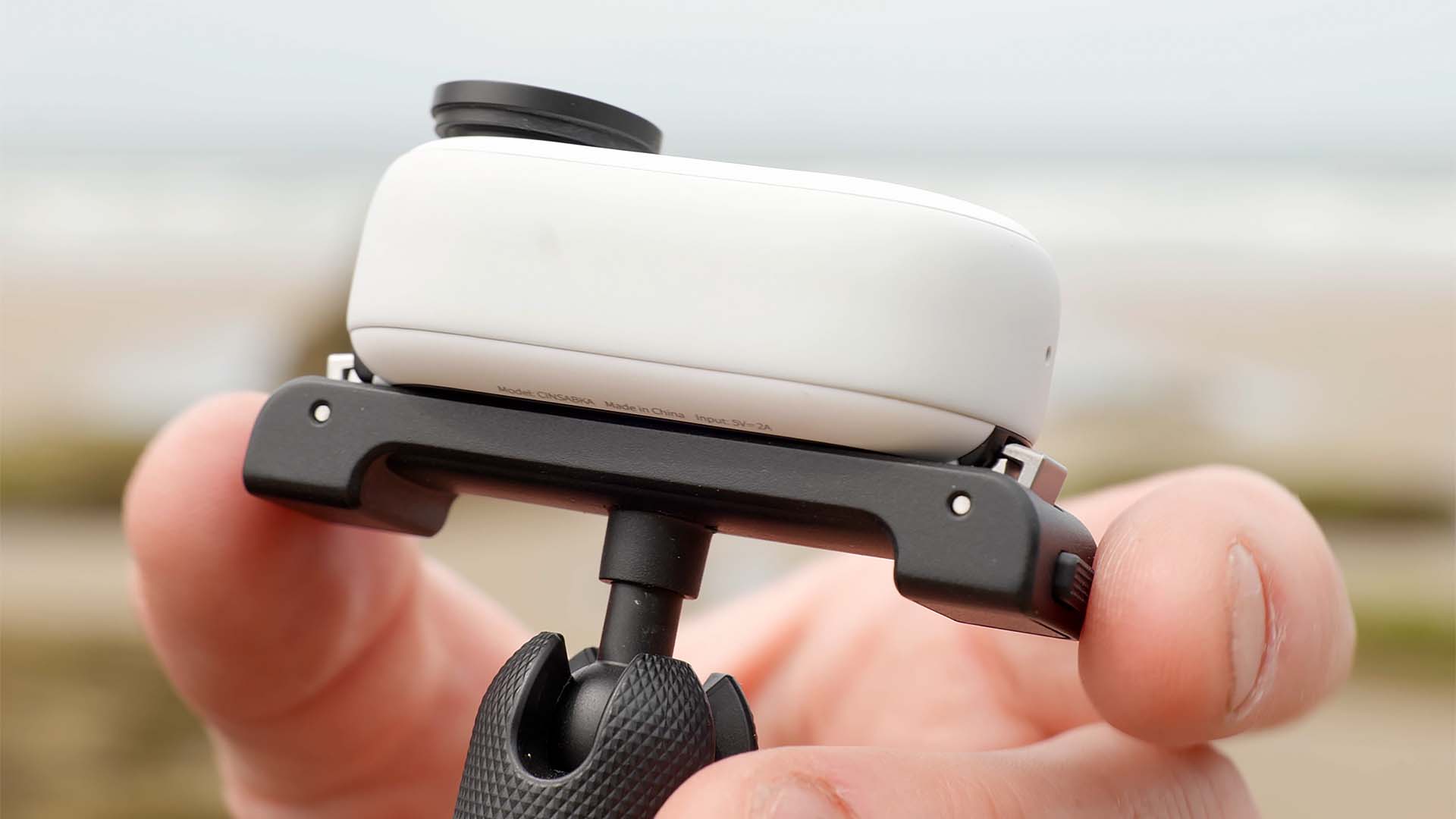
The Insta360 GO3 magnetic mounting system is quick to use, but has some flaws.
Power up of the Action Pod is fast, and then it takes a second or two to connect to the camera. Even when the camera is mounted inside the pod it connects to the camera via a wireless connection. This has its advantages and disadvantages. One of the main advantages is that the camera can be remotely controlled and its image viewed from afar. The disadvantage is that the overall distance you can go before the connection becomes inoperable is around the size of a mid-sized room. That said, it's a clever idea and gives users even more options for creative use of the camera.
The large rear LCD on the Action Pod makes the familiar Insta360 user interface far easier to use than any of the company's previous cameras. It's responsive, clear, and additionally it gives haptic feedback when options are tapped.
Shooting functions
Unlike the GO 2, which was primarily a video camera, the GO 3 can take on many more functions, including stills and timelapse. The latter can be made as either a video file, or as a series of stills images, including raw files. Timelapse's can also be set up with a pre-timer that will turn the camera on at a pre-determined time, for example if you want to capture a sunrise and don't want to have to get out of bed to do it. Just set the camera up the evening before and let itself start recording at the time you've set.
The GO3 also now features a pre-record cache function that will record up to 30 seconds ahead of when you press the record button.
With regard to normal video, the big change with the GO 3 is that you now have two options for filming. There's a straight video mode, which runs at up to 2.7K resolution. This mode bakes in any field of view and stabilisation options you have set, and requires no extra processing.
Freeframe video mode is similar to what existed on the GO 2. It requires some post processing work and runs at a slightly lower 1440p resolution, but it gives users the most flexibility. Stabilisation and field of view can be set after shooting because the camera captures the entire sensor area. There's even scope for reframing the shot somewhat as well, including the ability to use keyframes for more creative options. If you have the time for the extra processing, I'd recommend the use of Freeframe mode as your go-to setting.
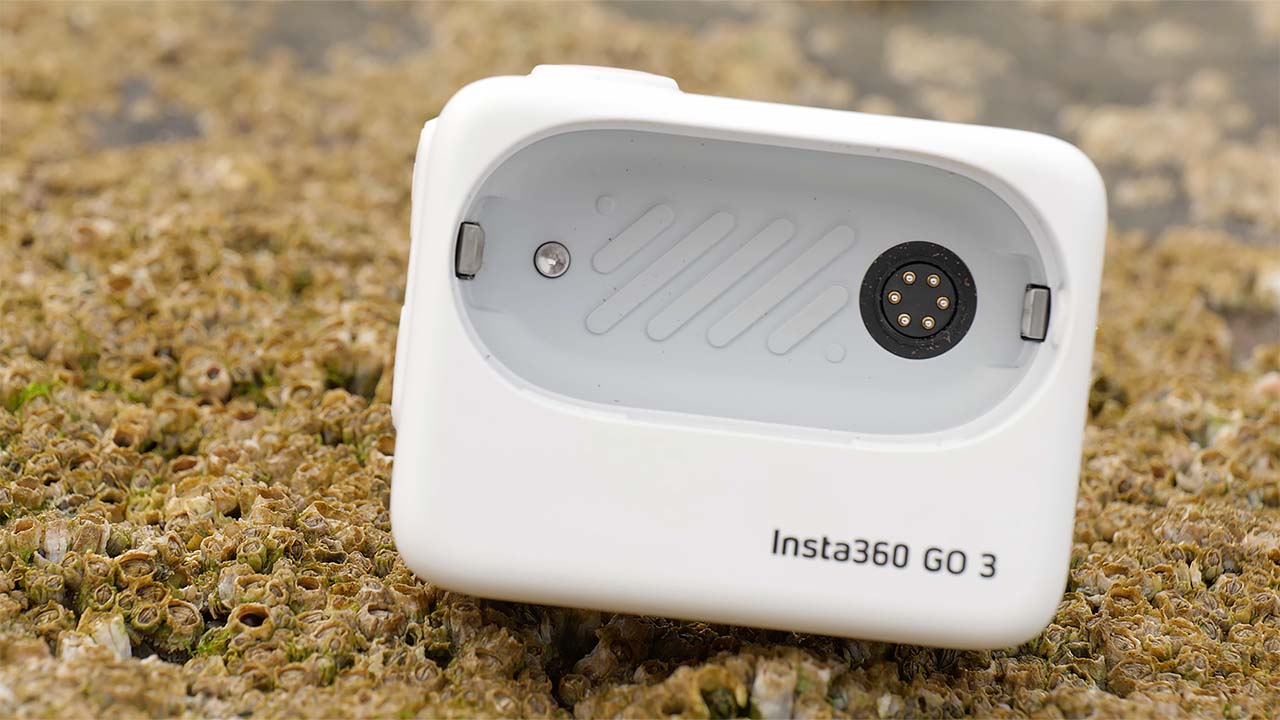
The GO3 Action Pod. Larger than the GO2, but gives much more battery life and shooting flexibility.
Image quality and practicality
All of the footage I shot was with the sharpness setting on the camera set to Low. Insta360 recommended Medium, but I always feel that the lowest setting is always the way to go, and the GO 3 is no exception. I found the picture was still sharp looking, but much more natural than when the sharpness is increased. For such a small sensor, dynamic range is pretty good, as is noise control.
I found that when I was mountain biking on an overcast day in the forest, the stabilisation did show up some motion blur, even with the Low Light option switched on. But it was still passable, and in good light this wouldn't be an issue.
I found that overall, despite the different FOV options, the Linear option gave me the best results for pretty much all shooting scenarios. It's very wide, and gives you straight edges as well. It's actually wider in some aspects than the Ultra-Wide setting, strangely. For helmet mounting and POV it is superb.
For MTB chest mounting, the best way to go is to use the device inside the Action Pod for much better battery life. Even if it rains heavily, the system will be fine, since the Action Pod is rated to IPX4 with the camera attached to it.
Water sports is a different matter, however. For water sports you'll need use the GO 3 on its own and leave the Action Pod on shore, or purchase the Dive Case, which will protect both, albeit with the risk of fogging during UK winters. However, there is, at least, an option there so that the pod can be used with the camera during more intense water sports. Although it does somewhat negate the advantages of having such a small camera body.
Using the GO 3 on its own for helmet mounting is a pleasure. It's so small and light, making it far less intrusive than any other action camera on the market right now. If I could level one criticism at it in this configuration it's that I would like the recording sound indication to be louder, since I had to keep asking my paddle buddies to tell me if it was recording or not.
The great thing about the GO 3 is the ability to be quite spontaneous with the mounting. For example, the sticky mount lets you place the camera in places where it could ordinarily be difficult to find a mounting option for other cameras.
Audio has been hugely improved over other Insta360 cameras. The GO 3 is most certainly the best camera the company has made so far with regards to sound capture. I found that with the system mounted to a chest mount while churning along on an MTB, the camera did a great job of picking up my voice even with no wind or noise reduction options turned on.
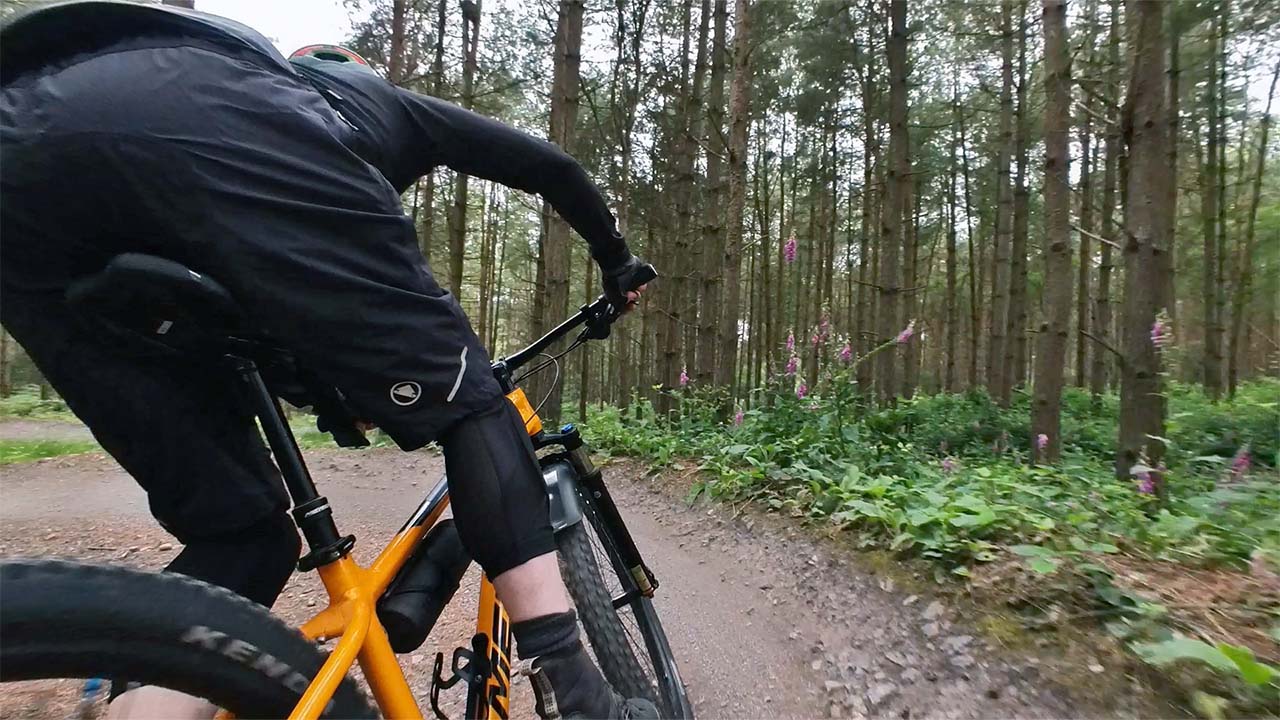
The tiny size and weight of the GO3 means it can be mounted in difficult places, such as on the lightweight extension poles I used to get this MTB shot.
Carrying the camera in a vlogging style scenario in high winds did, of course, provide a huge challenge. However in 'normal' breezy conditions the camera still did a good job of sound pickup. Alas, there's no compatibility so far with any USB mic adaptors, so it's a relief that the camera on its own does such a good job of it, particularly given that the flip up screen is designed for vlogging style applications. Let's hope that USB mic adaptor compatibility is simply a matter of updating the firmware, since it would still be a great option to have.
The magnetic clip mount system, as I mentioned earlier, is quite similar to the DJI system on the Action 2. For most uses the system appears fine, although you do need to sometimes jig the camera around a bit to ensure that it is properly seated. I did have a reservation about the side facing release buttons, however. A concern that came to fruition when I was going out in my surf kayak. As I was shuffling the boat along the sand to get it floating, I knocked one of the release buttons with my paddle blade and the GO 3 tumbled into the water.
I lost it for a bit as the sand churned around it, covering its position as the waves came in. I eventually found it, but then lost it again when it slipped into the water again when I hadn't quite got it clipped in and another wave hit me. I then spent a good 5-10 minutes searching all over for it, since I had to leave it while I got my boat onto the beach again. This was a concern I also had with the Action 2, but DJI beefed up the system considerably with the Action 3, making it so that even if one clip became disconnected, it was still difficult to pull the camera off unless the second release button was also pressed.
Magnetic mounts like this are definitely the way forward for all action cameras, because they make mounting and dismounting across different setups fast and easy. I'm hoping GoPro will adopt such a system as well. But designers need to consider that they need to be constructed in a way that prevents accidental release through getting knocked. For this reason, helmet mounting on a kayak is also risky, since going upside down could easily hit one of the release buttons on a rock.
Conclusions
So, should you get the Insta360 GO 3? I feel that it's a very different camera to a GoPro or Insta360's own ONE RS system. The GO 3 is much more like a lifestyle camera that can do duties as an action camera when required. It's the sort of thing you can carry around with you and use unobtrusively to capture life's moments. For example, using the magnetic pendant mount to capture your interactions with your kids as they take their first steps or learn to ride a bike.
The current magnetic clip mounting system prevents me from recommending it as a true alternative to the ONE RS and GoPro etc, since it doesn't currently feature enough security, even though I do love it as a concept for its ease of use and convenience.
In conclusion, the Insta360 GO 3 is a well thought out system, and it performs extremely well for the purposes it is designed for. If you are looking for a camera that can be used in a spontaneous way, but you might want something you can use for action sports on a more casual basis, then the GO 3 is a good option to look at.
The GO 3 retails for £379.99 for the base camera, £414 for the Action Kit, which includes various creative mounts, or £469 for the Bike Kit. Other kits will be available for different sports and activities.


Comments